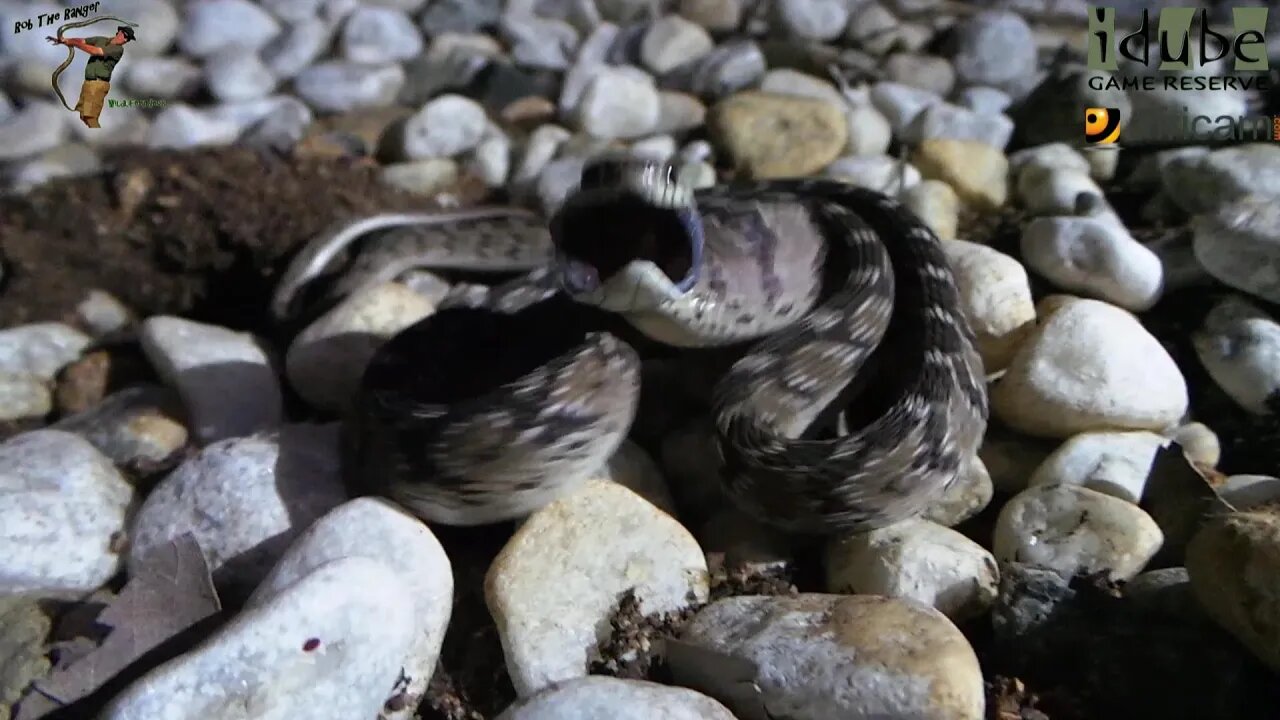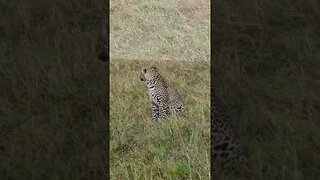Premium Only Content

Angry Snake! Defence Strategy Demonstration
Dasypeltis scabra, known as the common egg eater, egg-eating snake or rhombic egg eater, is a species of nonvenomous snake endemic to Africa.
It grows to a length of 20–35 inches (51–89 cm), and has almost toothless jaws. Dorsally, it has a series of rhomboidal dark brown spots on a lighter background. There is an alternating series of brown spots on each side. Ventrally it is yellowish, either uniform or with dark dots.
It has been suggested that nonvenomous Dasypeltis scabra is a mimic of venomous Echis carinatus, the saw-scaled viper, which it strongly resembles.
D. scabra also closely resembles Causus rhombeatus, the rhombic night adder. These two species may be distinguished by the shape of the pupil of the eye. Snakes of the genus Dasypeltis have vertical pupils, whereas snakes of the genus Causus have round pupils
Dasypeltis scabra feeds exclusively on eggs. The lining of the mouth has small, parallel ridges, very similar to human fingerprints, which aid in grasping the shell of an egg. Once swallowed, the egg is punctured by specialized vertebral hypapophyses which extend into the esophagus. The shell is then regurgitated in one piece, and its contents passed along to the stomach.
When disturbed, the snake inflates itself, "hisses" by rapidly rubbing together the rough, keeled scales on the side of its body, and strikes with its mouth kept wide open. as you can see on this video.
Filmed in the Sabi Sand Nature Reserve, Greater Kruger National Park, South Africa
Subscribe: https://bit.ly/30a0IRM | Merch: http://teespring.com/stores/robtheranger
Watch the newest videos: https://www.youtube.com/playlist?list=PLLLkJbMHt1booI-NVZ7lZxheEp8UMFRYE
Follow Rob The Ranger:
TWITTER: http://goo.gl/U8IQGf
INSTAGRAM: https://instagram.com/robtheranger
BLOG: http://goo.gl/yJJ3pT
FACEBOOK: http://goo.gl/M8pnJh
OFFICIAL bilibili: https://space.bilibili.com/1427022354
STEEMIT: https://steemit.com/@robtheranger
TUMBLR: http://goo.gl/qF6sNS
TIKTOK: www.tiktok.com/@robtheranger
Watch more videos!
Lions, Lions, And More Lions: https://www.youtube.com/playlist?list=PLLLkJbMHt1bpPTGnTaR798fdsHNJ7ZNGt
African Elephant (Loxodonta africana): https://.youtube.com/playlist?v=qzINZPv7PMc&list=PLLLkJbMHt1bpUo_KWtwJ3ck3Q1-xfMmkh&playnext=1
African Wild Dogs/Painted Wolves: https://youtube.com/playlist?v=DXQc_v5qjS4&list=PLLLkJbMHt1bocK9_hokQ5Z8tpEOukHJnv&playnext =1
Hippo (Hippopotamus amphibius): [https://youtube.com/playlist?v=nDgIt9QF_IM&list=PLLLkJbMHt1bqhsVIGpg5YgS4-prwujiKq&playnext=1
Most Popular: https://www.youtube.com/playlist?list=PLLLkJbMHt1bpQ4T4enPPMkf_5cK26Vouw
About Rob The Ranger Wildlife Videos:
The purpose of the channel is to show what it is like to experience seeing wild animals on an African safari. Nature Documentaries are often highly edited to tell a story, wildlife safaris are not, and the idea here is to show the wildlife sightings the way they were seen. Safari tours in Africa are generally suitable for all ages and this channel can be considered an educational channel about incredible nature, some scenes in the nature videos may be more graphic than people are used to but this is the reality of nature and is what you would see if you were present on such a safari in person. Safaris in Kenya, South Africa, or any other African country are an unrivalled experience for anyone with a passion for nature, wildlife photography, and travel. Hopefully the animal videos on this channel can provide a glimpse into what the nature experience is like and encourage more people to take a wildlife safari one day. Make sure to subscribe and enable ALL notifications!
#africananimals #africanwildlife #africansafari #animalvideos #naturevideos #amazinganimals #worldofwildlife #africawild #africanimals #latestsightings
#africanadventures #naturedocumentary #incrediblenature
-
 0:14
0:14
Rob The Ranger Wildlife Videos
1 year ago $0.01 earnedLeopard Teeth #Wildlife | #ShortsAfrica | HolidaysWithShorts
120 -
 54:20
54:20
The Rubin Report
2 hours agoStephen A. Smith Destroys ‘The View’s’ Joy Behar’s Narrative w/ Facts in Only 2 Minutes
6.01K17 -
 DVR
DVR
Bannons War Room
15 days agoWarRoom Live
3.99M936 -
 2:05:34
2:05:34
Steven Crowder
3 hours agoAmerica is Back: Breaking Down Everything You Missed in Trump's Joint Address
387K249 -
 1:09:24
1:09:24
Timcast
2 hours agoTrump WINS American Approval After Speech, Democrats PANIC As Party COLLAPSING, Dem Voters QUIT
48.2K61 -
 2:10:02
2:10:02
Matt Kohrs
10 hours agoStocks on Edge, Breaking Market News & Live Trading $1M || The MK Show
64.7K6 -
 LIVE
LIVE
Caleb Hammer
1 hour agoThis One Will Trigger You | Financial Audit
1,706 watching -
 LIVE
LIVE
LFA TV
16 hours agoUNHINGED & DESTRUCTIVE! | LIVE FROM AMERICA 3.5.25 11AM
5,918 watching -
 14:39
14:39
Dr David Jockers
2 hours ago12 WARNING Signs You’re Low on Vitamin D You Need to Know!
4.26K1 -
 50:13
50:13
BonginoReport
6 hours agoState of the Union Breakdown: Democrats' Disastrous Decorum (Ep.153) - 03/05/2025
118K237